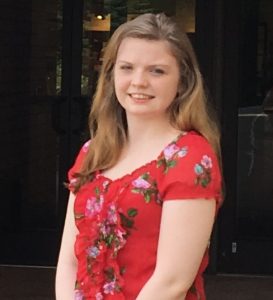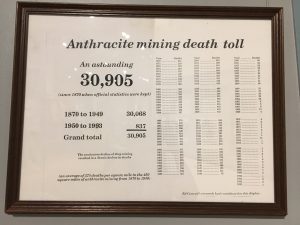Week 4 AHM
 Another week has flown by here at the Anthracite Heritage Museum. This past Monday, I did a short tour with one of the regular tour guides. She is a great tour guide who knows how to get the group involved with the artifacts and information being given. Additionally, not only is she able to do that but she has great public speaking skills. So, she is definitely someone I look up to in order to reach my goal of becoming a good public speaker. Later on that day, I presented to my boss my poster idea for an event happening at the museum in mid-July. He liked the poster and gave me a few ideas to improve it slightly. Along with looking over the poster idea, he read my news release and gave me a few suggestions in order to amend it. So, I am excited to show him the new poster idea I have come up with and the polished press release. For the remainder of the day, I cataloged a small number of donated artifacts. Most of the artifacts were easy to catalog, one on the other hand was not. It was an interesting artifact that I couldn’t come up with the name of the item. I looked up the artifact on the internet, but was not successful; I asked the curator what the artifact could be and he did not know. Thus, I would be curious to know what that medical tool is and what it was used for.
Another week has flown by here at the Anthracite Heritage Museum. This past Monday, I did a short tour with one of the regular tour guides. She is a great tour guide who knows how to get the group involved with the artifacts and information being given. Additionally, not only is she able to do that but she has great public speaking skills. So, she is definitely someone I look up to in order to reach my goal of becoming a good public speaker. Later on that day, I presented to my boss my poster idea for an event happening at the museum in mid-July. He liked the poster and gave me a few ideas to improve it slightly. Along with looking over the poster idea, he read my news release and gave me a few suggestions in order to amend it. So, I am excited to show him the new poster idea I have come up with and the polished press release. For the remainder of the day, I cataloged a small number of donated artifacts. Most of the artifacts were easy to catalog, one on the other hand was not. It was an interesting artifact that I couldn’t come up with the name of the item. I looked up the artifact on the internet, but was not successful; I asked the curator what the artifact could be and he did not know. Thus, I would be curious to know what that medical tool is and what it was used for.
Tuesday at the museum, I researched information for my poster project for the day. Most of the research I did was going through newsletters written by a Lithuanian group called the Knights of Lithuania. I learned a lot just by reading a small number of the newsletters. I learned a good number of information about the Soviet Union’s harsh treatment towards the Lithuanian population. For instance, one interesting fact I learned was that the Lithuanian people petitioned for Catholic priests to be let out of prison that caused a stir in the Soviet Union. As a result, Soviet Union officials went to great lengths to locate the Lithuanians that signed those petitions and put them in prison. Locating where the Lithuanians signers were was difficult because they did anything they could to not be found and avoid danger. It is saddening that the Lithuanians had to go through years of hiding and worry everyday about the possibility of facing danger. In the course of this research, I also came across general information that I did not know about. For instance, I discovered that Christmas cards came about in the early 1800s in London by an individual who wanted to make one unique card that he could send to anyone, rather than write one card for one individual. Nevertheless, I enjoyed this week and I am eager to see what next week has in store for me at the museum!


